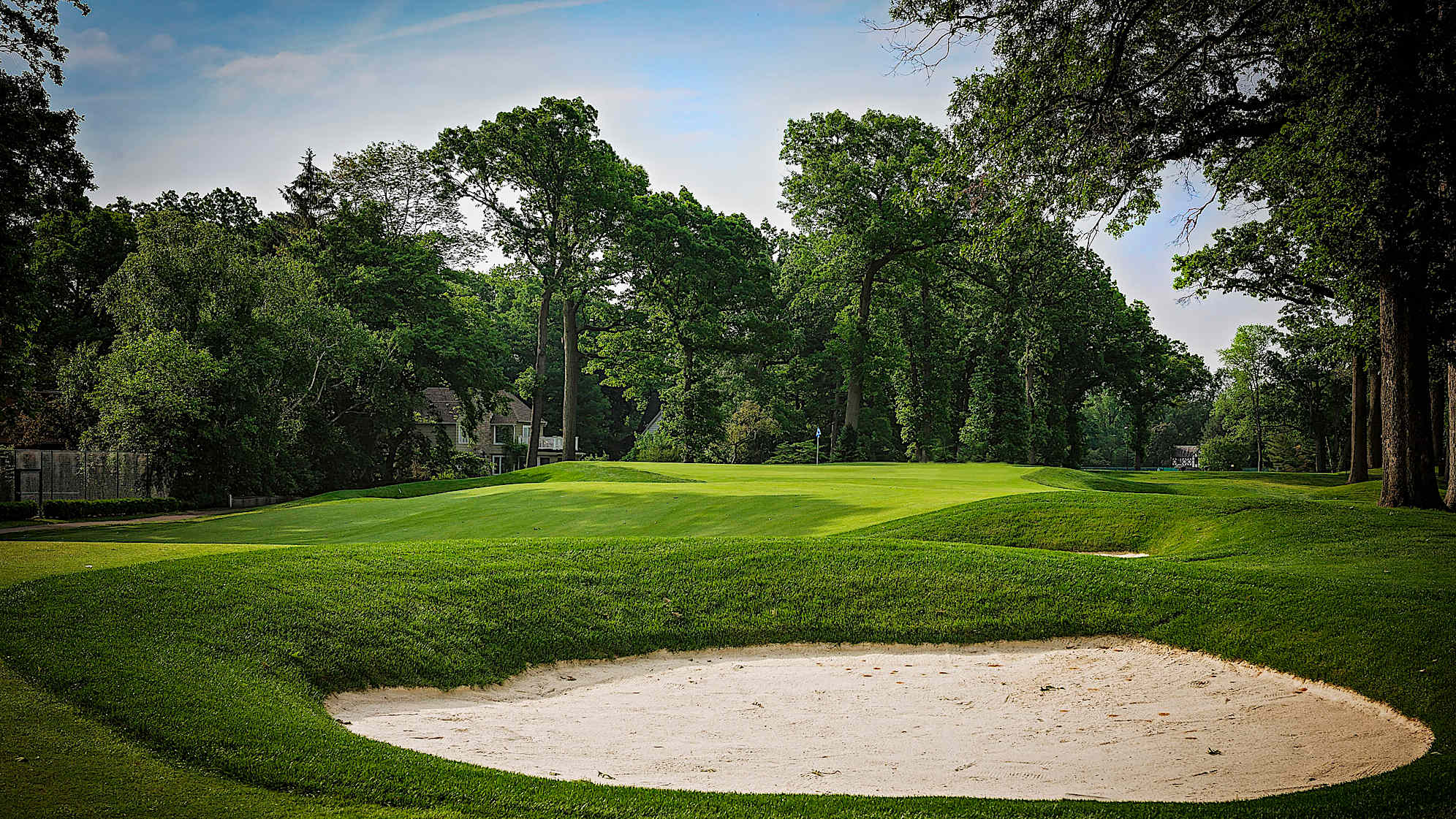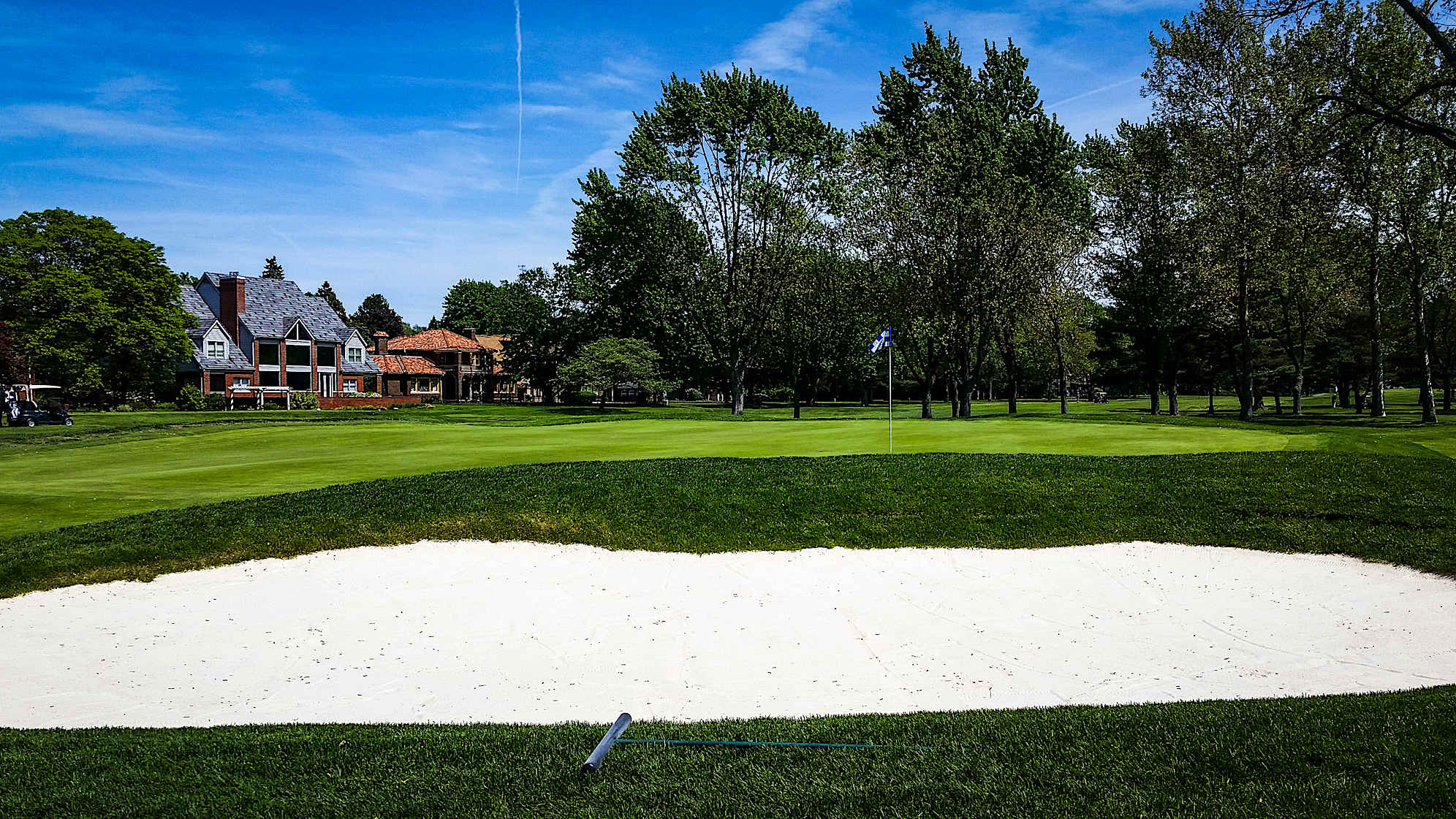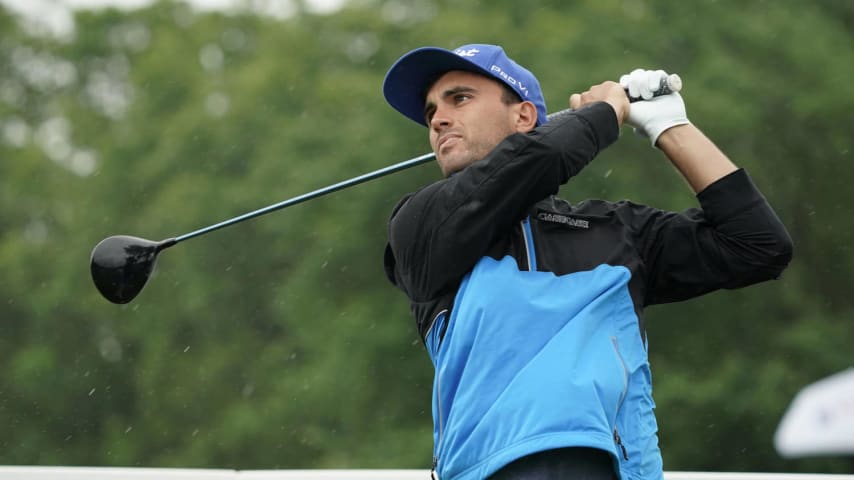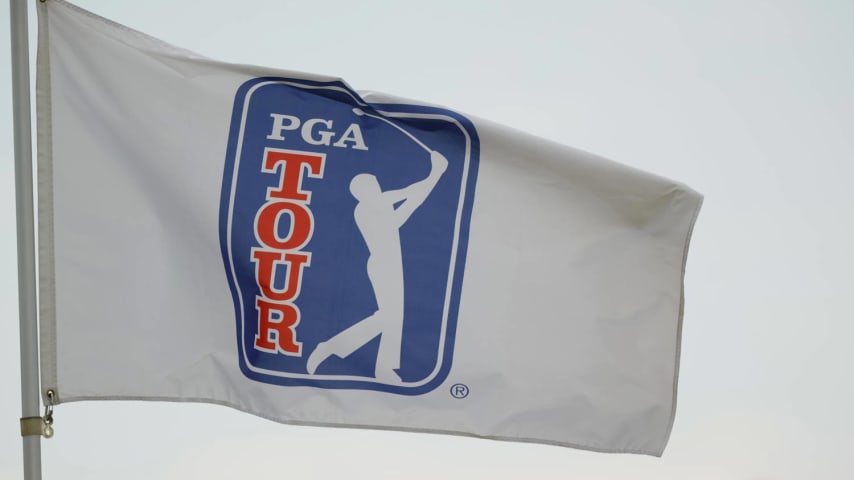Five things to know: Detroit Golf Club
8 Min Read
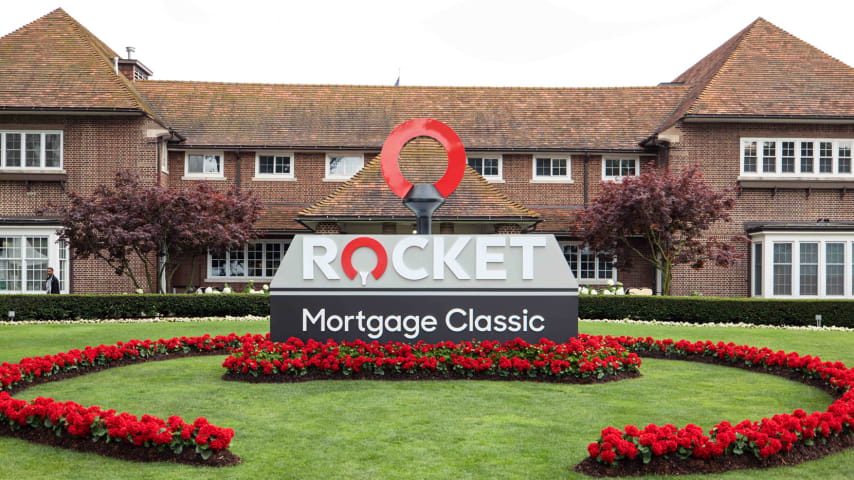
Written by Jeff Eisenband
Detroit is Motown, Hockeytown and now for six years running, Rocket Mortgage Classic-Town. This week, the PGA TOUR heads to Detroit Golf Club at a key juncture in the season, as players aim to cement their spots in the FedExCup Playoffs (top 70 after the Wyndham Championship in early August). While the event’s history might not yet span a decade, the golf course’s lifespan is spread across three centuries.
When Donald Ross designed the track more than 100 years ago, he might not have considered the likes of Cameron Young and Will Zalatoris attacking its terrain. But they're at Detroit Golf Club this week and ready to tackle its challenges, with low scores likely required to contend and win.
Here are five things to know on Detroit Golf Club as it plays host to the sixth Rocket Mortgage Classic.
1. Technically a composite course
Detroit Golf Club was founded in 1899 during the William McKinley administration. The initial course had six holes and annual dues were $10. Three more holes were added in 1900.
In 1913, after the club purchased some more property, it requested the services of Donald Ross, who was just a few years removed from designing Pinehurst Nos. 1, 2 and 3. In Detroit, Ross felt he had enough room for two 18-hole courses. The North Course, a par 72, would ultimately become more daunting than the South Course, a par 68, with the North Course now roughly 870 yards longer.
In 1914, Ross’ brother Alec was made head club professional, a post he maintained for 31 years. Alec, an accomplished player, won the 1907 U.S. Open.
The Rocket Mortgage Classic layout is comprised of 17 holes from the North Course and one from the South Course. The PGA TOUR layout begins with holes 8 and 9 serving as Nos. 1 and 2, followed by hole 1 from the South Course serving as No. 3. The course then plays holes 2-7 of the North Course as Nos. 4-9 before the standard North Course back nine makes up the final nine for the championship.
2. Who’s who of Detroit
Detroit Golf Club established itself roughly four years before the Ford Motor Company incorporated. The Ross renovations were apparently enough to convince Henry Ford himself to join, as he became a member in 1915. His son Edsel, who served as Ford’s president from 1919-1943, also was a member.
Since its start, Detroit Golf Club has brought together a who’s who of Detroit. Original Ford Motor Company stockholder and philanthropist Horace Rackham funded the initial $100,000 to pay for Ross’ 36 holes. U.S. Senator James Couzens, who sold his Ford Motor Company stock to Henry Ford for $30 million in 1919, was a common presence on the course, as was Fred Wardell, the founder of the Eureka Vacuum Cleaner Company, based in Detroit.
In more modern terms, athletes have made up much of Detroit Golf Club’s celebrity base. Justin Verlander, Jerome Bettis, Jim Leyland, Jim Schwartz and Vinnie “The Microwave” Johnson have been among those to call Detroit Golf Club their golf home.
On the arts side, famed poet Edgar Guest was an early member, while Kid Rock is a more modern member. Aretha Franklin owned a home near the seventh hole in which she is believed to have recorded her 1998 album “A Rose is Still a Rose.”
Of course, prominent golfers have called Detroit Golf Club home. After Alec Ross stepped aside from his post as head club pro, he was replaced by another major champion, two-time Masters winner Horton Smith, who held the job from 1946 until his death in 1963. Adding to this club pro legacy was Walter Burkemo, who won the 1953 PGA Championship at nearby Birmingham Country Club.
Meanwhile, in 1986, Detroit Mayor Coleman Young made history when he became the club’s first African-American member. While not a golfer, Young applied for a non-golfing membership and hoped his admittance would open the door for more African-Americans in the city. Dennis Archer, an associate justice of the Michigan Supreme Court, who would serve as Young’s mayoral successor, followed as a member. Detroit Golf Club has had three African-American presidents since 2003.
3. A flat challenge
Two weeks before heading to Scotland for the Genesis Scottish Open and The Open Championship, the PGA TOUR is far from those contours and now visiting the plains of the Midwest. When Detroit Golf Club entered the PGA TOUR rotation in 2019, its standard deviation of terrain change stood at 2.18 feet, edging TPC Louisiana (2.23) as the flattest course on TOUR.
For reference, the highest point at Augusta National Golf Club is 318 feet (No. 1 green) and the lowest point is 170 feet (No. 11 green). That’s a change of 148 feet. The elevation change at Detroit Golf Club from highest point to lowest point is roughly 43 feet.
While Donald Ross did apply some undulation to the fairways, the greens do not present the same runoff as Pinehurst No. 2. A century later, Detroit Golf Club holds up as a beautiful piece of property, but it has had its challenges holding up against the best PGA TOUR players in the world. The 2019 event’s cut line of 5-under was the PGA TOUR’s lowest since 2016. Nate Lashley won that year at 25-under. Tony Finau won in 2022 at 26-under, and Rickie Fowler won last year in a playoff over Collin Morikawa and Adam Hadwin after all three posted 24-under.
Golf course superintendent Jake Mendoza, who had stints on the staff at Winged Foot and Medinah before taking the Detroit Golf Club gig in 2018, mentioned in 2020 the green speeds might have been conservative in 2019 and expressed an interest in speeding up the surfaces in 2020. The winner’s score dropped to 23-under in 2020 and 18-under in 2021, before soft conditions produced lower scores in the event's next two iterations.
Plans are also underway for a renovation of Detroit Golf Club between the 2025 and 2026 Rocket Mortgage Classic, led by architect Tyler Rae, with the intent of restoring Ross' original vision for the layout.
"We are honored to be spearheading its golf course restoration, which will incorporate many facets of Donald Ross’s bold original design including hummocks and mounds, angled drainage ditches and perched greens," Rae told Golf Course Architecture website.
4. Traditional test
Many old-time American golf courses present some easier holes on the front nine to help guide players into the round. Detroit Golf Club provides scoring opportunities early but also requires players to execute with precision when choosing to be aggressive.
The first side of the card is marked by a heavier tree line, with Nos. 6, 7 and 8 representing a trademark stretch on the course. These holes (Nos. 4, 5 and 6 on the member layout) demand tee shots into tight fairways with undulation running balls off the sides of the short grass. Two-tiered greens await, as well, setting a fine line between one-putt opportunities and three-putt fits.
“We don’t have a lot of elevation change out here,” Mendoza told The Detroit News in 2019. “But there’s no flat lie anywhere on those three holes.”
No. 4 should also present some theatrics, as the par 5 is listed at a whopping 635 yards. Two precise woods are needed for a chance at reaching the green in two, and an errant tee shot into the trees could have even the longest hitters scrambling for par.
Nos. 17 and 18 represent a tale of two mindsets, as the 577-yard, par-5 17th played as Detroit Golf Club’s second easiest hole in 2021 (4.455), while the 455-yard, par-4 18th ranked as the seventh most difficult at 3.981. In total, the front nine played to a 34.88 average last season, with the back nine playing to 35.04. Both nines play to par-36 for the TOUR field.
5. A forgotten Cinderella Ryder Cup
In 1937, the U.S. Ryder Cup Team, led by non-playing captain Walter Hagen, went to Southport and Ainsdale Golf Club in England and defeated Great Britain, 8-4, winning the final four singles matches behind Gene Sarazen, Sam Snead, Ed Dudley and Henry Picard. Two years later, World War II began in Europe and the Ryder Cup would not return until 1947.
At least, not officially.
Teams on both sides had actually been selected for the 1939 Ryder Cup, with Great Britain canceling two months before the competition. As the story goes, Hagen, who had been captain for all six Ryder Cups and was slated to be captain a seventh time, was bragging at an exhibition in Toledo about how his team would have defeated Great Britain again. Sarazen, who at age 37 was slated to miss the Ryder Cup team for the first time, called out Hagen, saying he could put together a team that could knock off Hagen’s roster.
Hagen accepted the challenge and in 1940, Sarazen brought a team of challengers to Oakland Hills, near Detroit. With Ben Hogan, Jimmy Demaret and Craig Wood on his roster, Sarazen’s team fought gamely but ultimately lost, 7-5.
In 1941, this time at Detroit Golf Club, Sarazen bulked up his team, convincing amateur legend Bobby Jones to play. Jones ultimately served as a difference-maker, propelling the challengers to a stunning 8.5-6.5 win. In his highly anticipated singles match, Jones, who retired from all non-Masters majors after 1930, battled Picard, who had recently won the 1938 U.S. Open and 1939 PGA Championship. Jones won, 2 and 1, essentially adding one final legend to his name.
Remember "D3: The Mighty Ducks," when Gordon Bombay and Ted Orion led the Eden Hall JV hockey team to a win over the varsity team? That’s basically what this was like.
This adjusted Ryder Cup format continued in 1942 at Oakland Hills and 1943 at Plum Hollow Country Club, also in the Detroit area, with the U.S. Team defeating the challengers on both occasions. Hagen, who missed out on the reselected team in 1942, actually played with the challengers those two years.

















